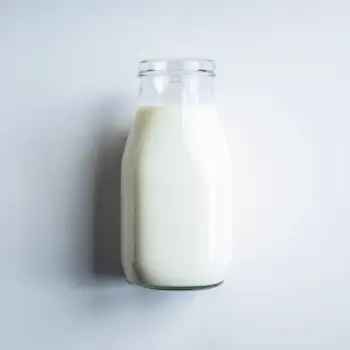Heavy cream and milk are dairy products differing in fat content and culinary uses; cream is thicker and richer, ideal for whipping and adding luxurious texture to dishes, while milk is lighter, perfect for tenderizing baked goods and creating lighter soups and sauces.

Heavy cream, also known as heavy whipping cream, is a thick, rich dairy product with a high fat content, typically around 36-40%. It's prized for its ability to whip into stiff peaks and add luxurious texture to dishes.

Milk is a nutritious liquid produced by mammals, a kitchen staple with a much lower fat content than heavy cream. It's used for its refreshing taste and versatility in both sweet and savory cooking.
The main differences lie in fat content, consistency, and culinary uses. Heavy cream has a rich, velvety texture and a neutral yet slightly sweet taste. Milk is lighter, with a thin consistency and a sweetness that varies depending on fat content. Their different fat content also means they behave differently when heated, with heavy cream being more resistant to curdling.

Your ultimate Recipe Box, Meal Planner, and Cooking Class all in one
Used in recipes like mousse, ganache, and whipped cream toppings, heavy cream provides a thick, sumptuous mouthfeel. Its ability to be whipped into firm peaks makes it perfect for desserts that require structure and richness. Ideal for puddings, pastry creams, and ice creams, milk offers a lighter texture. It's the go-to liquid for tenderizing baked goods, contributing moisture without the added heaviness of cream.
Heavy cream is often used in soups and sauces to create a creamy, thick base that clings to pasta or enriches soups. Examples include Alfredo sauce and cream of mushroom soup. Milk can be used to add a lighter creaminess to soups and sauces, such as in béchamel sauce or in chowders. It's also a base for many homemade cream soups when you want a lighter consistency.
In baking, heavy cream contributes to a rich and tender crumb in scones, biscuits, and pastries. It's also used for creamy fillings and frostings that require a stable structure. Milk is the foundation for many baked goods, providing the necessary liquid to activate gluten and leavening agents. It's used in bread, cakes, and pancakes for a lighter, softer texture.
Heavy cream is calorie-dense and high in fat, while milk is lighter and a good source of calcium and protein.
| Nutrient | Milk ( per Cup ) | Heavy Cream ( per Cup ) |
|---|---|---|
| Fat | 2g | 88g |
| Sodium | 100mg | 90mg |
| Calcium | 300mg | 137mg |
| Protein | 8g | 5g |
| Calories | 103 | 821 |
| Carbohydrates | 12g | 7g |
Yes, you can use milk instead of heavy cream in soups for a lighter version, but the soup will be less creamy and rich.
Not exactly. While similar, heavy cream has a slightly higher fat content than whipping cream, which allows it to hold its shape better when whipped.
You can make a heavy cream substitute by mixing ¾ cup of milk with ¼ cup of melted butter.
No, milk does not have enough fat to whip and hold air like heavy cream does.
Yes, substituting milk for heavy cream will result in a lighter taste and less creamy texture.